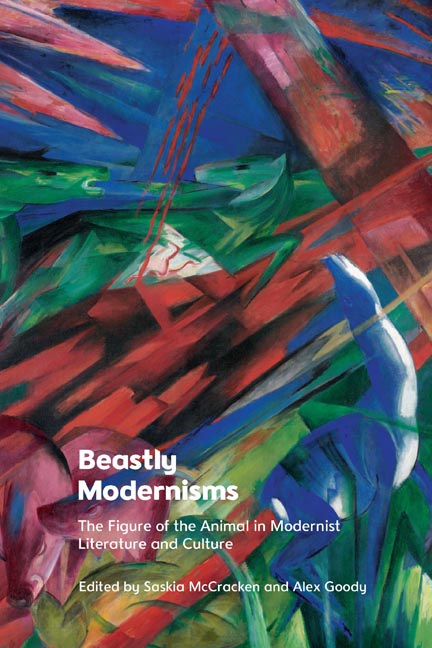Book contents
Afterword: The Animal in the Mirror
Published online by Cambridge University Press: 21 October 2023
Summary
MIRROR RECOGNITION/ANTHROPOCENTRIC VISION
Towards the beginning of her memoir, ‘A Sketch of the Past’, Virginia Woolf gives an account of ‘the incident of the looking-glass’, when she attempts to understand why, at a young age, she already seemed ashamed of her own face and would look in a mirror only if alone. She recalls the memory of a dream – or perhaps of a real-life incident, she is not really sure – in which ‘I was looking in a glass when a horrible face – the face of an animal – suddenly showed over my shoulder’ (Woolf 1985: 69). And she adds, ‘I have always remembered that other face in the glass, whether it was a dream or a fact, and that it frightened me’ (69).
Who or what is this animal in the mirror? We can assume it is a beast in that ‘debased’ sense referenced by Djuna Barnes, given the fear it provokes, but who, where? Is Woolf seeing herself or another as beast? Perhaps what is frightening is the indeterminate slippage between what/who I see in the mirror and what/who I am, a slippage that, as so many essays in this volume point to, pushed modernist writers to look through the taxonomies and the ‘logics of optical and literary realism’ (see Fagan in this volume, p. 110) in order to uncover the forces and sensations of an animal/human or human/animal hidden, if also disavowed, within. In this regard we might be reminded of Kafka’s protagonist, Red Peter, the ape turned human who admits in his lecture to the academy that he had to ‘whip’ the animal outside of himself to be accepted as such (Kafka 1993: 203). But every night as he returns from his work, that beastly, if humane, nature returns to allow him to find sympathy with his untrained, female ape-companion. Such sympathy is linked to the creaturely at the core of ‘beastly modernisms’, a function of the vulnerability shared between human and nonhuman animal and especially by those excluded from, othered or abused by the anthropological machine.
- Type
- Chapter
- Information
- Beastly ModernismsThe Figure of the Animal in Modernist Literature and Culture, pp. 279 - 291Publisher: Edinburgh University PressPrint publication year: 2023



